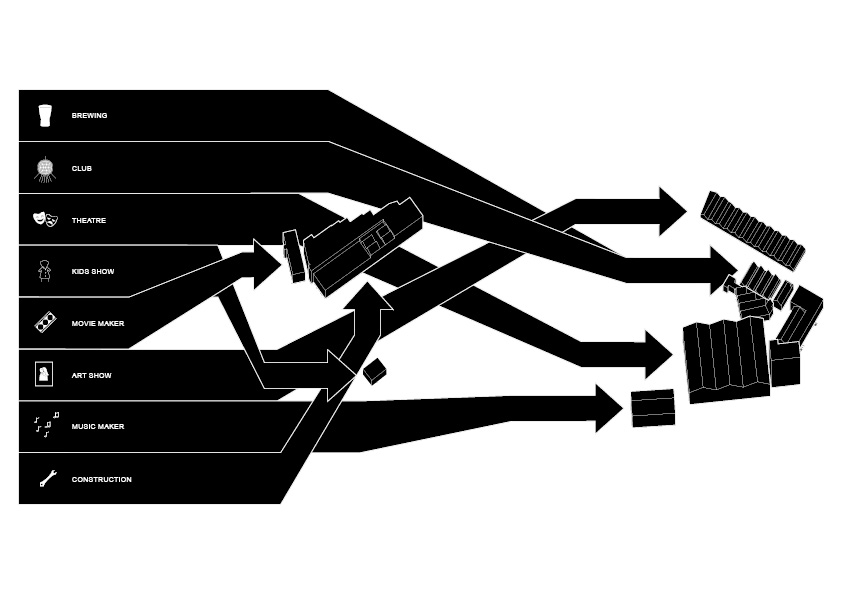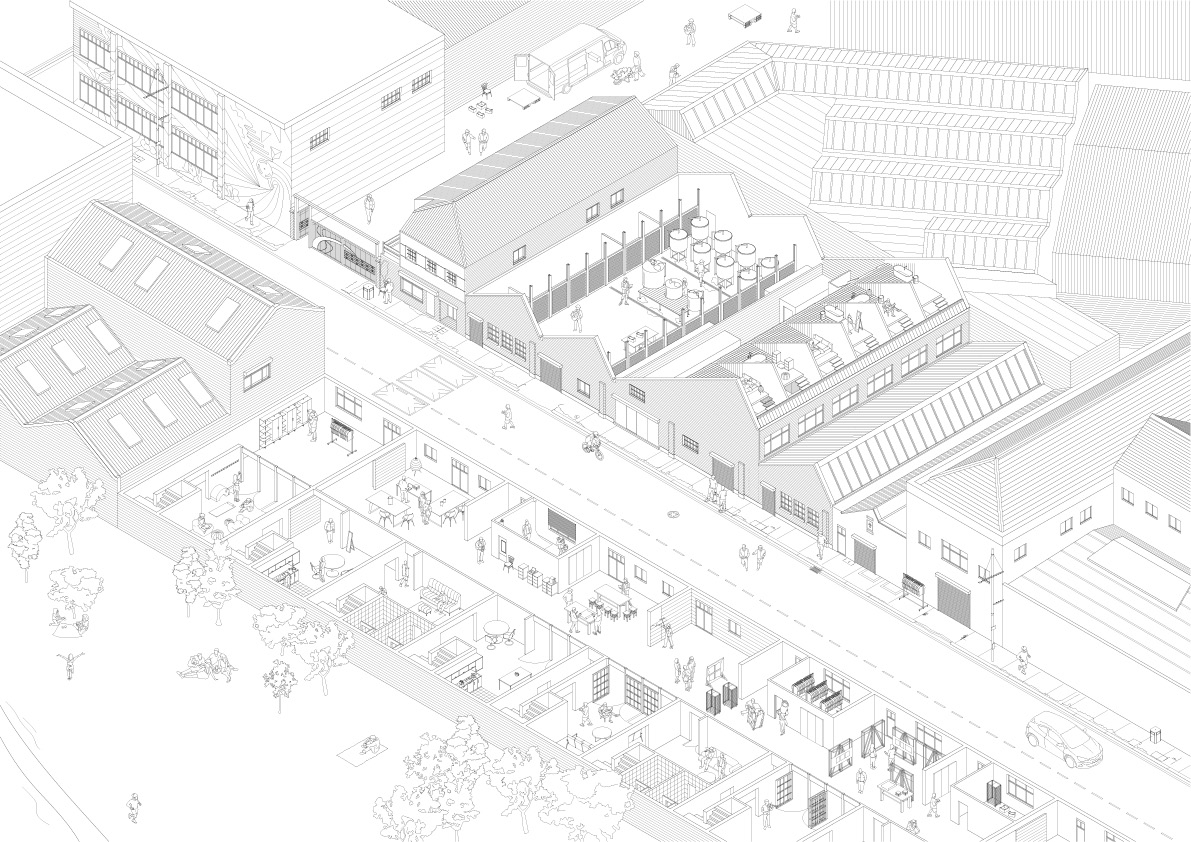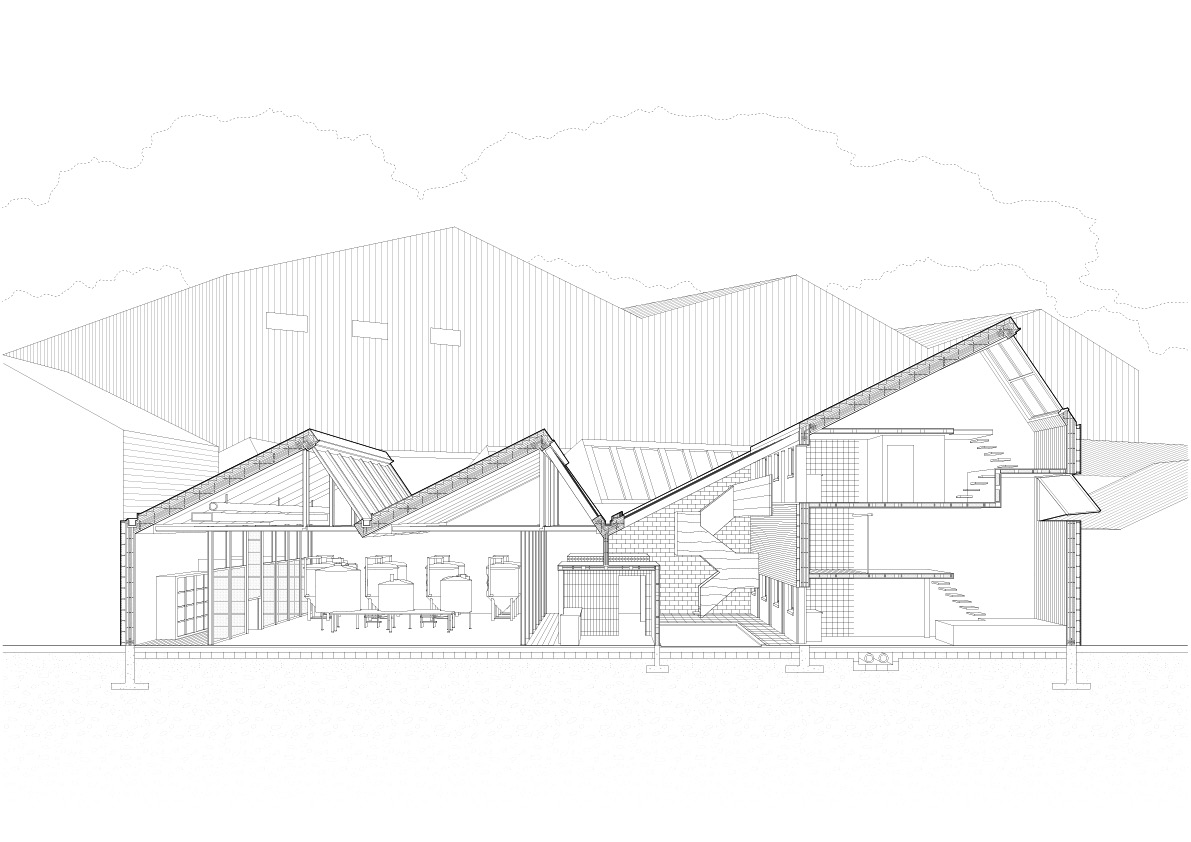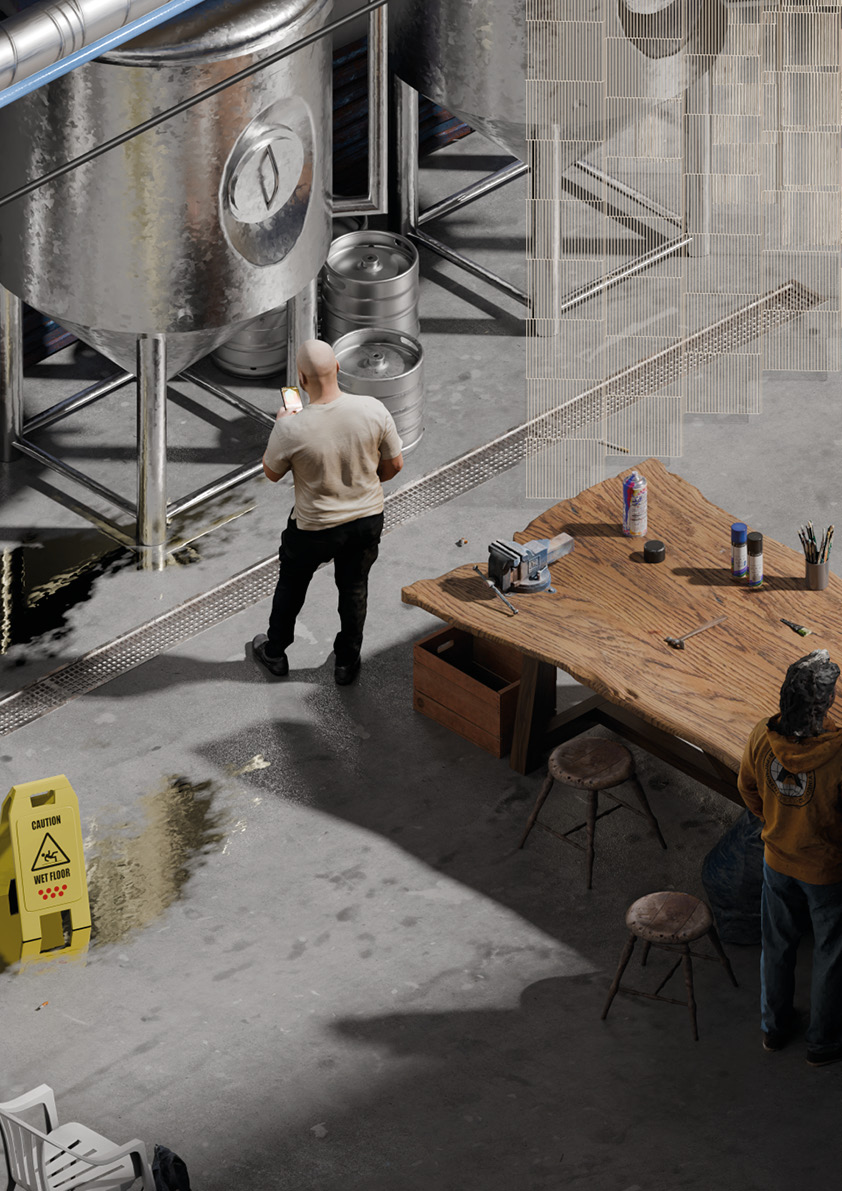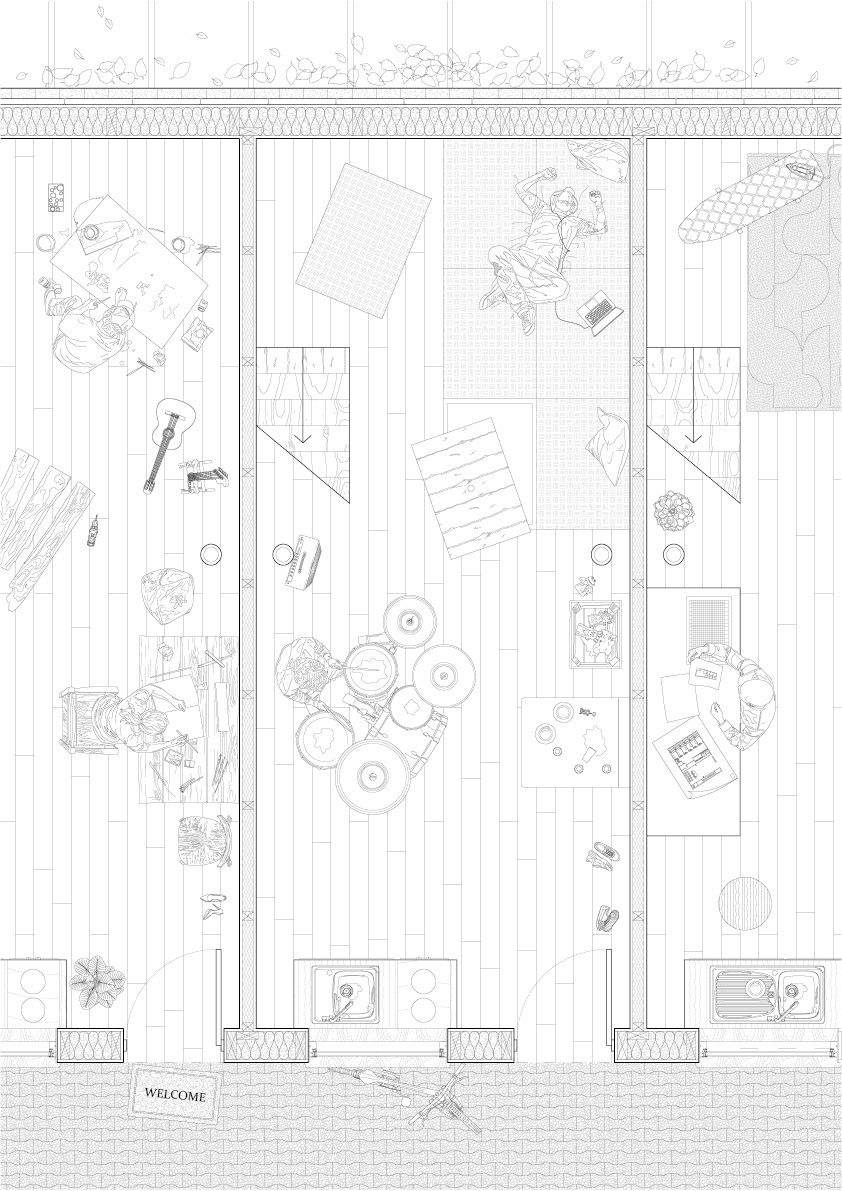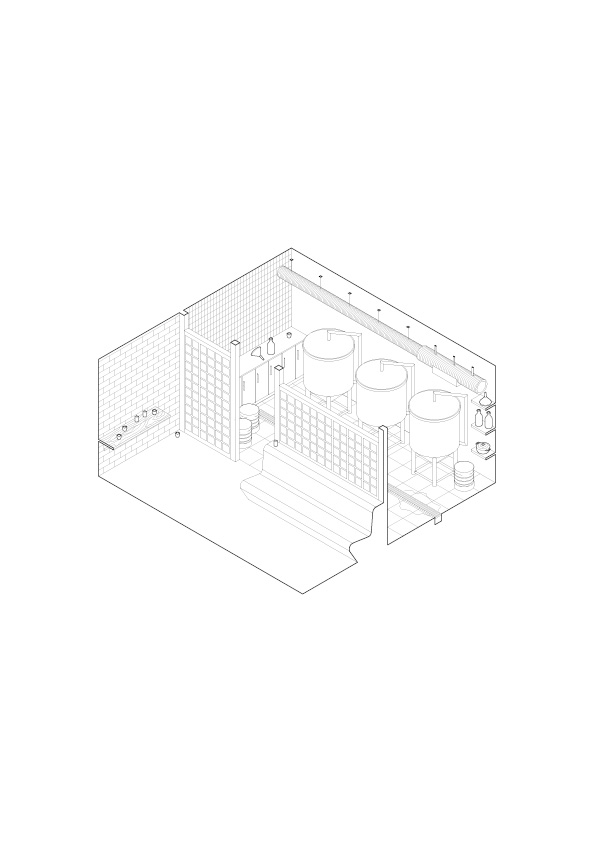CULTIVATING CREATIVE RESILIENCE
Forth year, Diploma 9 Free house 2023-24. Haringey, London, United Kingdom
Description:
London is in the midst of a housing crisis characterized by high rents, limited space, and unaffordable new builds. Many find themselves priced out and struggling to find a place to call home. Located in London in the borough of Haringey Is the Harringay warehouse district these warehouses, transformed into living and working spaces, transcend conventional living. As more of the warehouses became inhabited, like-minded creative individuals were drawn to the sites, fostering a community of like-minded people. Concealed from the general public and importantly the watchful eyes of the council , the discretion of the needs of a determined artistic crowd along with their strong bond to their landlords saw a unique evolution collimating to a gradual evolution and establishment of a new form of living. Despite the community’s growth, since official building legislation was not designed to support unconventional typologies, its procedures cast doubt on the warehouse district’s sustainability.
London is in the midst of a housing crisis characterized by high rents, limited space, and unaffordable new builds. Many find themselves priced out and struggling to find a place to call home. Located in London in the borough of Haringey Is the Harringay warehouse district these warehouses, transformed into living and working spaces, transcend conventional living. As more of the warehouses became inhabited, like-minded creative individuals were drawn to the sites, fostering a community of like-minded people. Concealed from the general public and importantly the watchful eyes of the council , the discretion of the needs of a determined artistic crowd along with their strong bond to their landlords saw a unique evolution collimating to a gradual evolution and establishment of a new form of living. Despite the community’s growth, since official building legislation was not designed to support unconventional typologies, its procedures cast doubt on the warehouse district’s sustainability.
Large communal areas allow for events like exhibitions, performances, and workshops, providing opportunities to exhibit work and engage with the broader community. Local interactions enhance the area’s cultural vibrancy and builds a sense of shared connection and solidarity between residents and neighbours, offering benefits to the community as well as the value of the local area. Private bedrooms larger than standard size free to customization are adjacent to large communal spaces occupying half the warehouse, this space provides an area for both work and leisure to coexist. Today the site is home to over 1000 visionary’s, many offering a unique skill set and profession within a creative industry, from architects, to tattoo artists, theatre performers and rave organisers as well as a variety of less conventional creatives. Rollover contracts ensure residents area never tied down to lengthy fixed tenancies, so the warehouse is constantly marked by a dynamic mix of new and long-standing tenants, the space offers the residents to establish their own practices, encouraging a range of startups and grassroot businesses to establish themselves, as seen with the various cafes, recording and art studios.
One example of this intervention with the use of existing professions is a brewery and nightclub, in a continuation of residential living with the addition of a brewery and nightclub, spaces will leverage the productive potential of these spaces to generate revenue and subsidize housing costs. The rationale behind the decision to introduce this specific typology came after research into the economic feasibility. As well as careful consideration of the grassroots preferences of the existing community of creatives. Food manufacturing is steadily increasing and as such is in constant need of warehouses to facilitate the market’s expansion:notably beer brewing, has seen a particular increase in take up. Beer is both produced and sold on site, at a small scale as such does not require the outsourcing of monitoring and producing to external employees, The entire process is carried out by the live-in tenants of the warehouses, at the scale for low labour demand, generating a stable passive income meaning they will have sufficient time to work on their own creative endeavours. The process from creation of the brewery to production will make use of the existing skills available on site.

